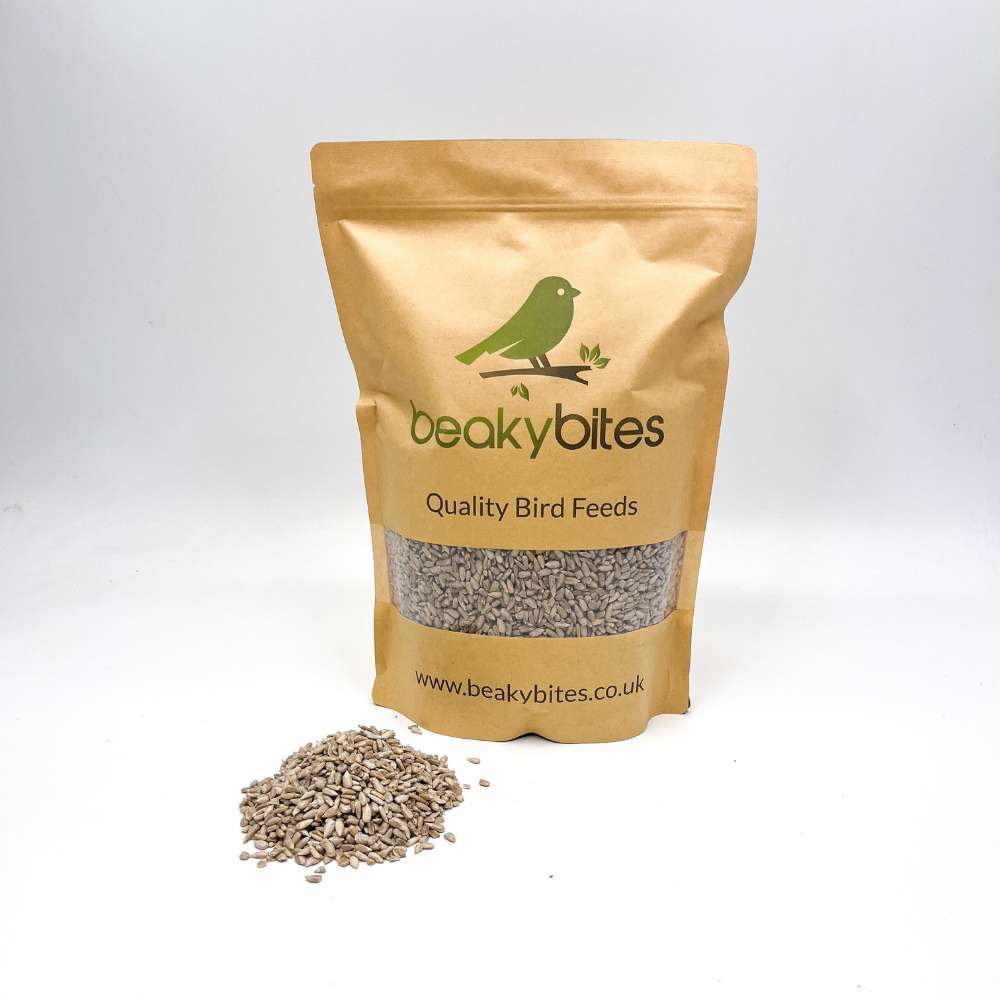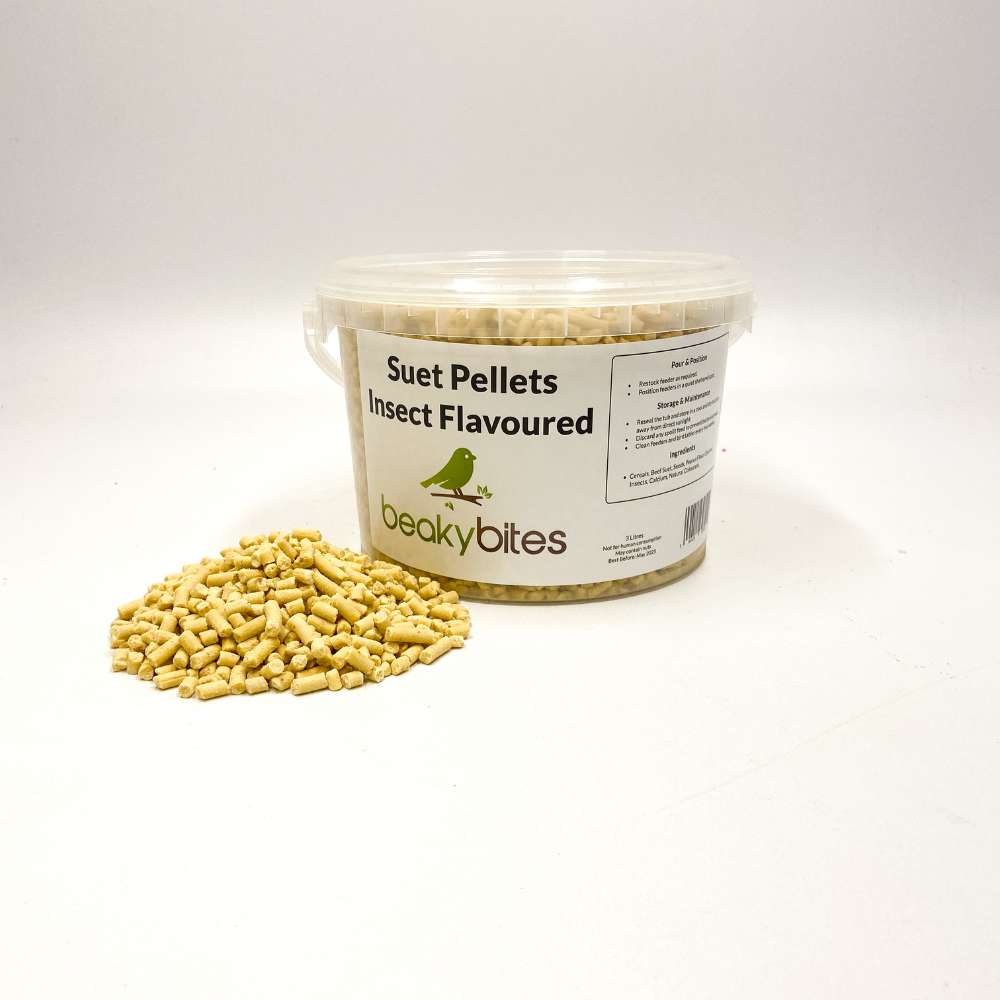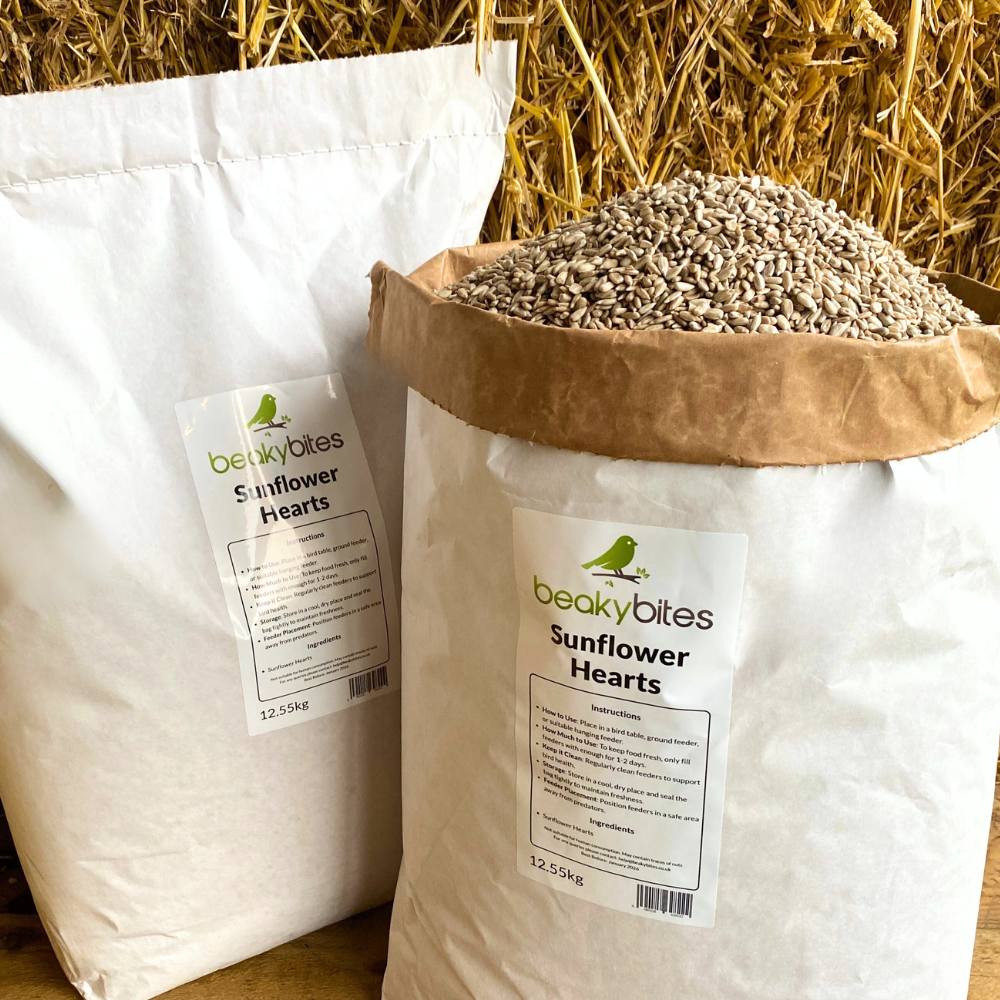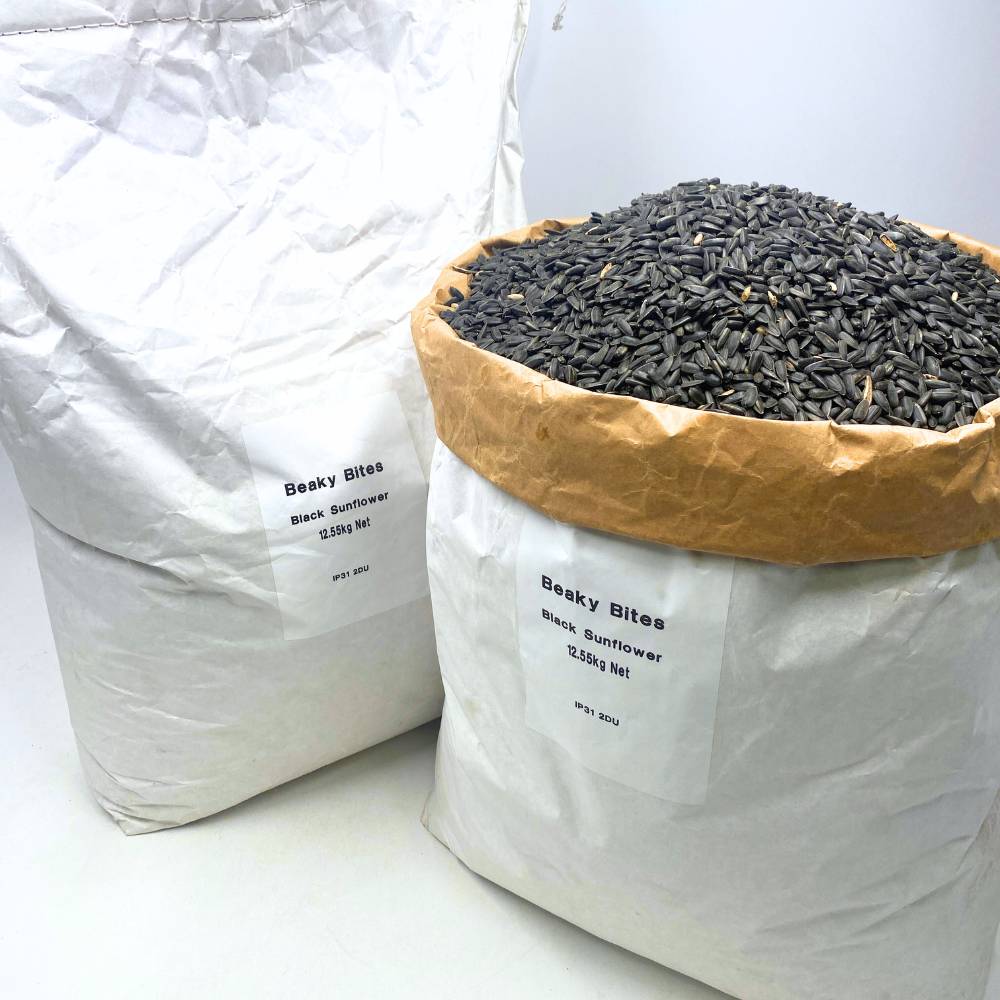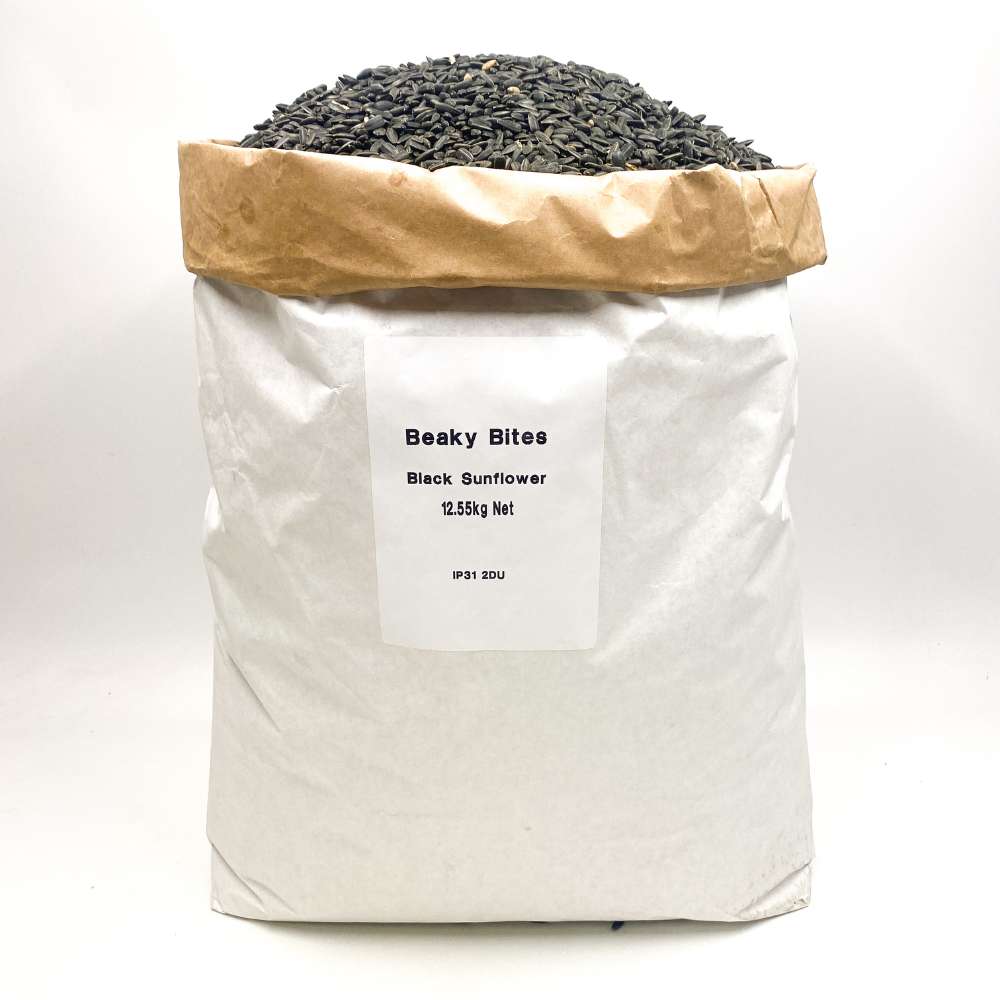Bird Fact File: Wood Pigeon

Welcome to our bird guide series brought to you by Beaky Bites! In each post, we'll take a closer look at a beloved UK garden bird to help you better understand and appreciate these amazing birds. From identifying distinct features to discovering their favourite foods and nesting habits, this series aims to provide an overview of our feathered wildlife.
Let's Meet the Wood Pigeon
Wood Pigeon Fact File | |
|---|---|
| Size: | 40-42cm, head to tail |
| Wingspan: | 75-80cm |
| Weight: | 500-550g |
| Colours: | Grey, White, Black, Pink, Brown |
| Eggs: | 2 eggs per brood, 2-3 broods a year |
| Nesting: | In trees and large hedgerows |
| Population Status: | Stable |
The wood pigeon is a big and beautiful bird, easy to spot with it’s grey feathers, white neck patch and pinky chest. The white band on it’s wings is visible when it flies which is a bonus. You’ll see them in gardens, parks, woodlands and farmland, either on the ground or in the trees. Scientifically known as Columba palumbus, wood pigeons are part of the Columbidae family. With an estimated 5.4 million breeding pairs in the UK they’re a common and comforting sight all year round.
.jpg)
Appearance and Behaviour
Wood pigeons are lovely birds with soft grey feathers, a white neck patch and a pinkish breast. Both males and females have this lovely look, juveniles lack the white neck patch and have duller plumage until they mature.
Wood pigeons are herbivores and eat seeds, grains, leaves, berries and nuts. In gardens they’re often seen pecking at seed under feeders or foraging on the ground so are easy to spot.
They’re calm and social, often in pairs or small groups but big flocks can be seen in fields and woodlands. Their gentle cooing is so soothing and they’re a familiar and lovely presence in gardens, parks and the countryside all year round.
.jpg)
Where do They Hang Out and Eat?
Wood pigeons are opportunistic feeders and will take what they can get all year round. In spring and summer they eat seeds, leaves, shoots and berries and will forage in gardens, fields and hedgerows. You’ll see them pecking at the ground or nibbling on plants.
As autumn and winter come in wood pigeons focus on nuts, grains and fruit to get them through the colder months. They’ll happily forage under bird feeders for spilt seed or snack on peanuts and suet from garden tables. Their varied diet makes them a common visitor to gardens and parks.
Wood pigeons can be found in many habitats, from urban parks and gardens to farmland, woodlands and hedgerows. They need trees or dense shrubs for nesting and roosting with open space nearby for foraging. Planting berry producing shrubs like holly or ivy and putting out seeds or suet in feeders will encourage them to visit.
With their soft cooing and beautiful plumage wood pigeons bring a sense of calm and serenity to any garden. Their gentle movements and laid back nature make them a joy to watch all year round.

Breeding and Nesting
Wood pigeons start breeding in early spring, typically from March, and can raise up to three broods in a single season if conditions are favourable. Each brood usually consists of two smooth white eggs, which the female incubates for around 16-17 days. Both parents take turns feeding the chicks a special nutrient-rich “pigeon milk,” which helps them grow quickly. The young leave the nest after about 30-35 days but may stay nearby as they continue to learn from their parents.
During the breeding season, wood pigeons can become territorial, cooing softly to communicate and defend their nesting areas. Their gentle calls are a familiar sound in gardens and woodlands during spring and summer, creating a calm and peaceful atmosphere.
Wood pigeons build their nests in trees, shrubs, or even on ledges and sheltered corners of buildings. The nests are simple platforms of twigs, often appearing flimsy but strong enough to support the eggs and chicks. These adaptable birds are resourceful, thriving in urban areas, farmland, and natural woodland, bringing their serene presence to all sorts of spaces.
.jpg)
Attracting Them to Your Garden
Wood pigeons are opportunistic feeders, enjoying a diet of seeds, grains, fruits, and the occasional green foliage depending on the season. If your garden already has trees, shrubs, or a lawn for foraging, it’s a great start, but adding seeds, grains, and suet blocks will make it even more inviting. These high-energy foods are especially important during the winter months when natural supplies run low.
Suet is particularly appealing to wood pigeons, as it provides the fats they need to sustain their large bodies. Suet pellets, fat balls, or mixed seed suet blocks are ideal choices. Pair these with scattered grains or sunflower hearts, and you’ll create a feeding area that wood pigeons will return to daily. As ground feeders, they’re happiest with food placed on bird tables, platforms, or directly on the ground.
Creating a bird-friendly garden with berry-producing shrubs like elder, holly, or hawthorn will give wood pigeons natural foraging options. Adding feeders that offer easy access to suet and seeds will ensure they have an extra food source during tougher seasons. They’re not picky about feeder styles but prefer those that allow space to perch comfortably or food scattered on open surfaces.
By focusing on suet, seeds, and grains, you can attract more wood pigeons to your garden. Their gentle cooing, striking size, and calm presence add a peaceful charm to any outdoor space, especially in the quieter months of winter.
.jpg)
Conclusion
Wood pigeons love gardens with multiple food sources, seeds, grains, berries, leafy greens and trees or shrubs to roost and nest. They like open spaces to forage and nearby cover like hedgerows or woodlands. They especially love scattered grains, sunflower hearts and suet blocks which give them the energy for their quiet but substantial daily activity.
To attract wood pigeons to your garden put food on bird tables or scatter it on the ground as they prefer to feed at lower levels. Incorporate native shrubs like hawthorn, ivy or elderberry and they will have natural foraging options in winter. Wood pigeons are a peaceful addition to gardens, with their soft cooing and gentle movements, a joy to watch all year round.
Frequently Asked Questions
Are wood pigeons good for my garden ecosystem?
- Answer: Yes, wood pigeons help control weeds by eating seeds and can aid in plant pollination.
Where do wood pigeons typically build their nests?
- Answer: Wood pigeons build simple, twig-based nests in trees, shrubs, or even on ledges.
Do wood pigeons visit gardens all year round?
- Answer: Yes, wood pigeons are present in gardens throughout the year, adapting to seasonal food sources.
Why do wood pigeons prefer feeding on the ground?
- Answer: Wood pigeons are ground feeders by nature, foraging for seeds, grains, and fallen fruit.
What plants or shrubs can I add to my garden to support wood pigeons?
- Answer: Native plants like hawthorn, ivy, and elderberry provide food and shelter for wood pigeons.


